Humayun tomb a living graveyard as the title suggest we are going to flash a light on it. Living graveyard does not mean there are ghost walking in deep dark night. It is living as the bird, squirrel and the people walk and enjoy the tranquility of this graveyard.
An enormously attractive and magnetic building in Delhi the Tomb of an Emperor. The tomb of the second Mughal Emperor of India who ruled here. The description of the Emperor Humayun could be find easily in detail from Humayun-nama, a biography. Here we can shed few important characteristic of his life journey.
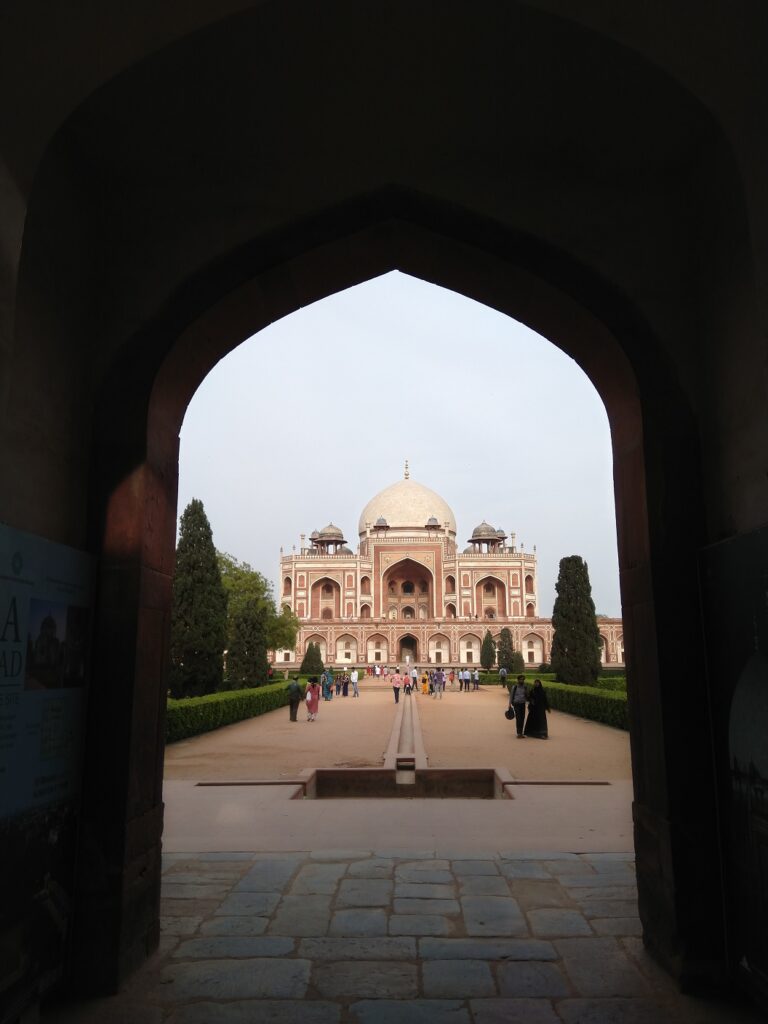
Who Was Humayun
Humayun was the eldest son of Zahir-ud-din Muhammad Babur. They belonged to Farghana Uzbekistan. Babur became the Ruler of Farghana and ruled successfully. But he had to take shelter in Kabul Afghanistan due to the conspiracy of his cousin brothers against him. When in Kabul Humayun was an able governer of Kandhar province in the age of 12. Babur attacked Delhi in 1526 and his son Humayun was the commander general of his army.
Babur defeated the large army of Ibrahim Lodhi in the first battle of Panipat. The history records that with an army of 12000 Babur defeated an army of 100 thousand soldiers with 1000 elephant. In this Battle Humayun played a great role to encourage his men and fight like tiger. On one side he was a great administer and brave soldier, on the other hand he was a great lover of his father “Babur”. On one occasion, Babur asked to his four sons, “What you wanted?”. Each replied for different regions of his vast empire to command, except Humayun. He wished that his Parent be healthy and happy forever to give a loving shed on his head.
The entrance of the tomb
Here we enter the tomb and a massive monument catches our eyes. The water tank and water flowing system here are the part of this garden tomb. The Persian style architect of the tomb impress every visitor of tomb. The stone were mostly rubble stone, red sand stone, white and black marble to built the tomb and complex. you can see and recognize them on the entrance gate wall, the first picture above on left. The inner side of the gate on right picture above. And the main tomb in the center.
From this entrance you are now required to show your ticket receipt to the guard and move in. Take a beautiful picture of the tomb from the first arch of the gate. move on with the water channel in the center of pathways straight to the tomb. These pathways and water channel surround the tomb of Humayun. it has fountain as well supplied with the water of Yamuna River, now with the electric motor. The water system and the garden is a copy of Paradise garden Mentioned in “Koran” The Holy book of Muslims. Thus known as the Mughal Paradise Garden, or “the Chharbagh”.
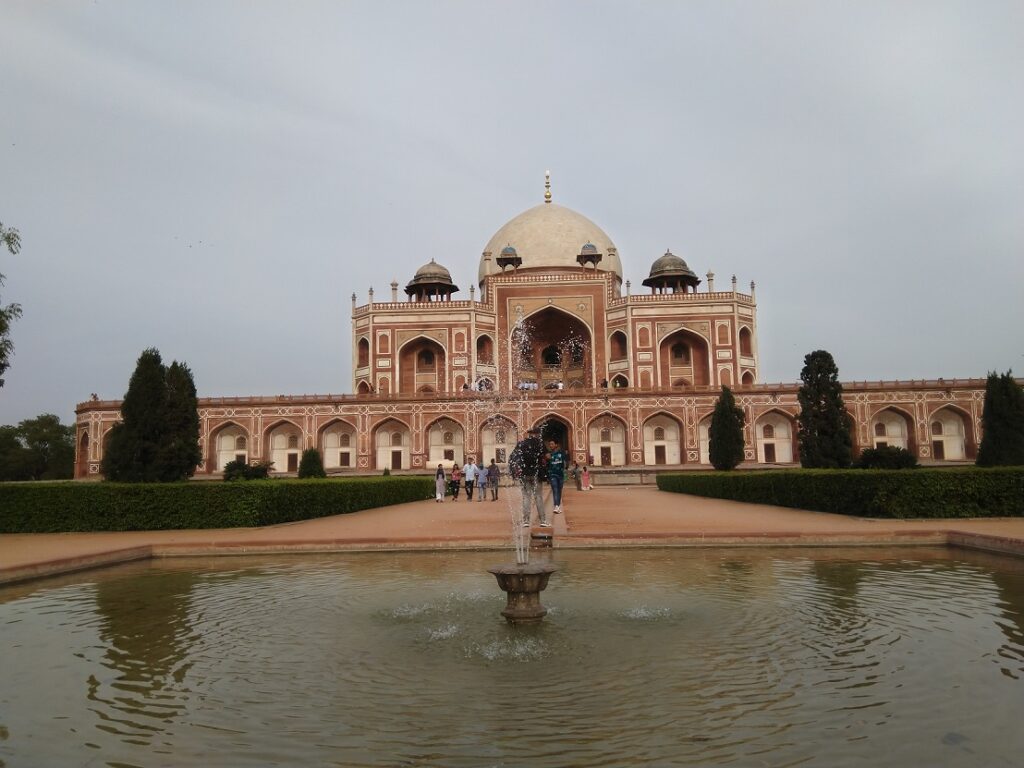
Humayun Tomb structure and the architecture
The tomb of Humayun is around 50 meter high. Built in many layers with to make it a perfect symmetrical monument. The quadrangles in a big square garden divided and later sub-divided to make its all corner equal. One of the central piece of land for the monument. The lower plinth is one meter high of the ground level while the burial of deceased take place two meter below the ground.
The other arch cells platform had been constructed to make the inner area open courtyard standing on the stone pillars. it has 17 arch on each sides while one each on the corners to make it into an octagonal shape structure. This lower 7 meter high platform of arch cells is the main graveyard of the Humayun tomb. The grave of Humayun lies below the ground. There are more than 140 other graves of his family members buried later near the Emperor.
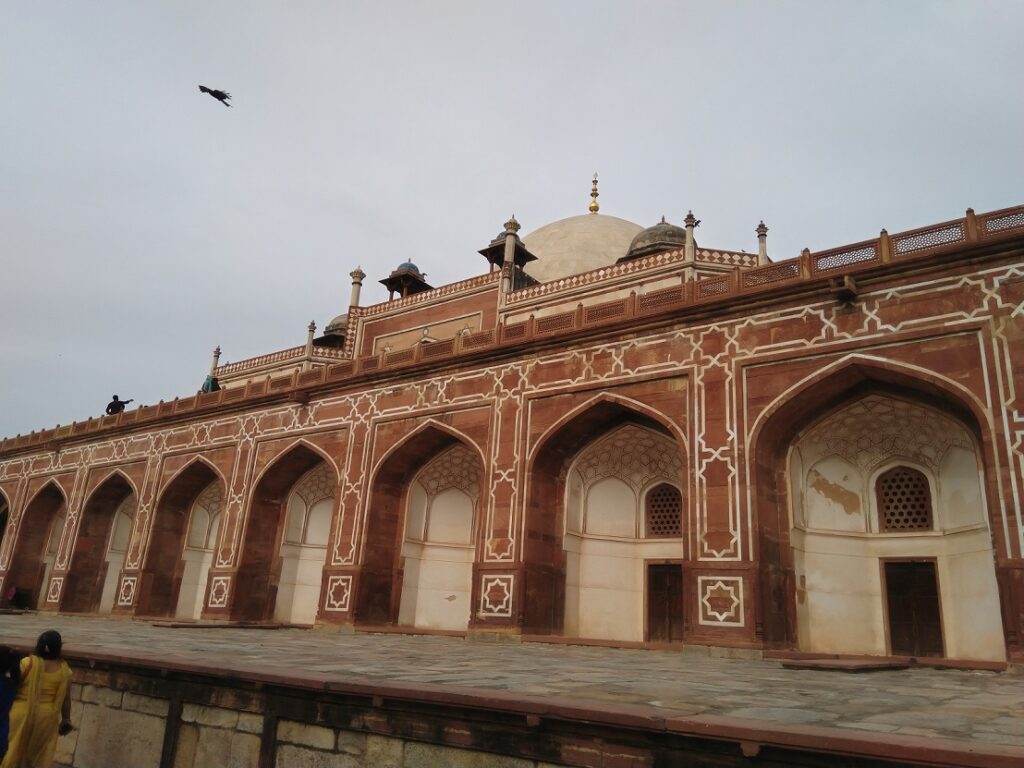
Lower platform of Arches 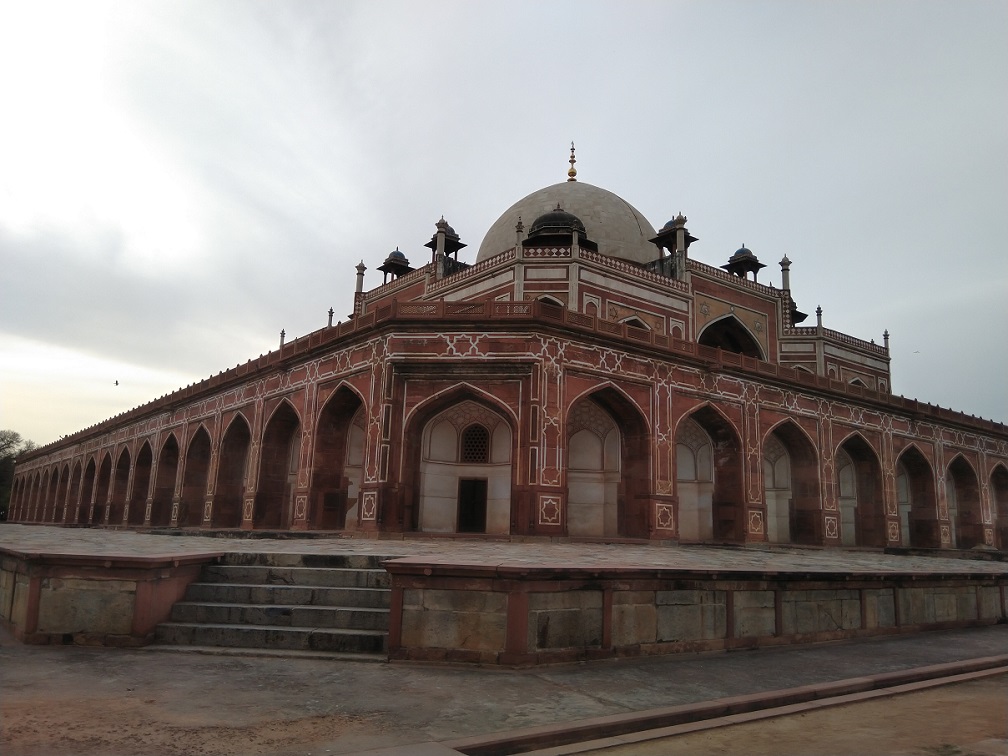
Three layers design 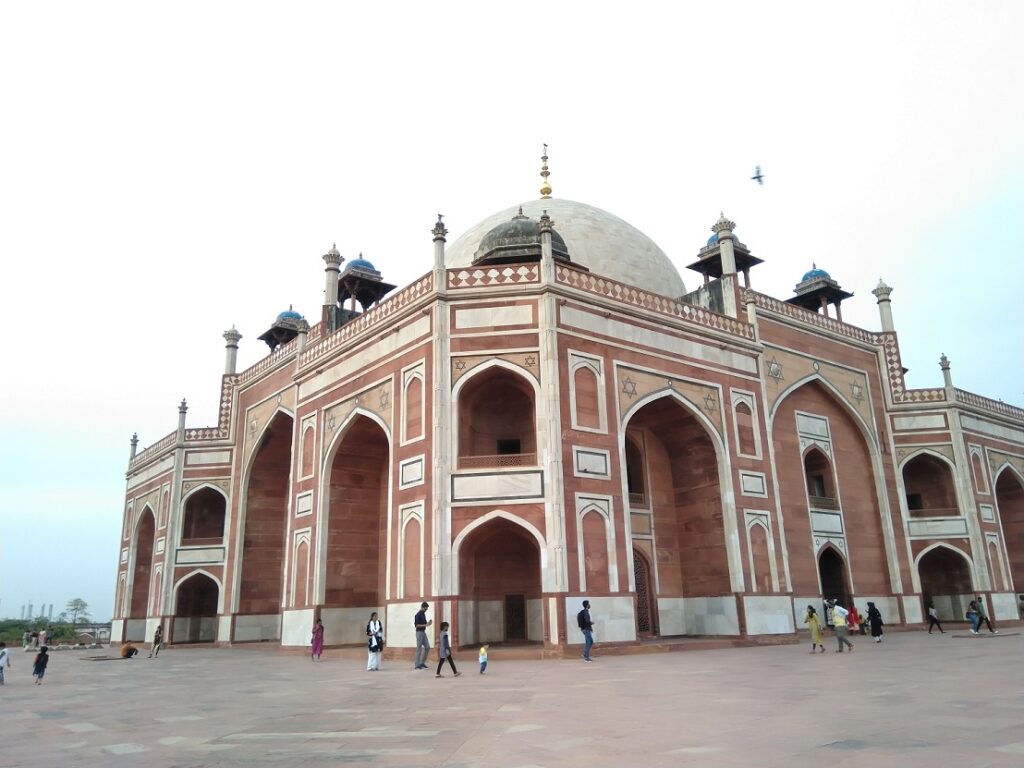
Upper building with Dome
The upper building on the platform
While the lower level platform is the main graveyard the upper building has many replica of the graves. The architecture of the tomb is impressive which is in three layers of construction. It is octagonal in structure with double storeys arch windows. These windows are actually the exterior of the chambers. there are four chambers of same designs of the central dome hall. Surrounding to the central chamber which contain the marble stone grave of Emperor Humayun. Also these chambers applied as big pillars to support the main double dome of the central hall.
The gap between two similar cambers on each side filled with a big arch. This is the central exterior arch of double storeys. Each lower storey of this arch appears on the lower as three arches for doors. While the upper has three arch appearing as windows. This big arch very beautifully connects the two either side chambers. Decorated with white and black marbles on the surface of the red sandstone, with star and lotus flower attracts many visitors in its surrounding. Making this decent and attractive Humayun tomb a living graveyard.
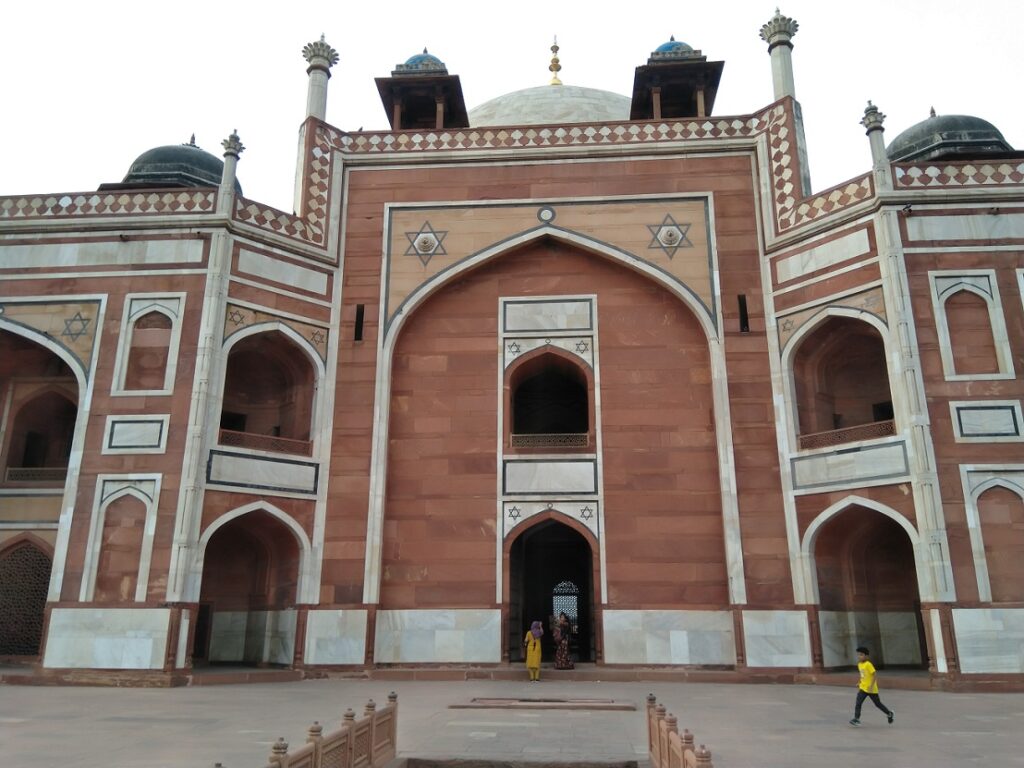
How and when the Emperor Humayun died.
The Mughal Emperor died in 1556 from his library. The old fort on the bank of Yamuna was the fort built by Sher Shah Suri. In 1539 and 1540 respectively the two battles fought between Emperor Humayun and Afghan Noble Sher Shah Suri. Humayun had to face the defeat, so he escaped with his wife Hamida banu Beghum, few faithful men and small amount of treasure. He wandered many places in India as refugee and lastly got shelter from a Hindu Rajput King of Amarkot in Sindh. It is here in Amarkot his wife bore their son Akbar who became the third Mughal Emperor of India.
Humayun went Iran to have military help and remained there for many years. In 1545 an accident of a cannon the Emperor Sher Shah Suri got badly injured and died. Later Suri descendants ruled for some time as Humayun returned from the Iran to take back his empire from them in 1556. Humayun regain his Empire but the same year he died accidentally falling from the stairs of his library in Old fort Delhi. He was buried in the fort, until the tomb was constructed in 1565. It took seven years to complete this garden tomb.
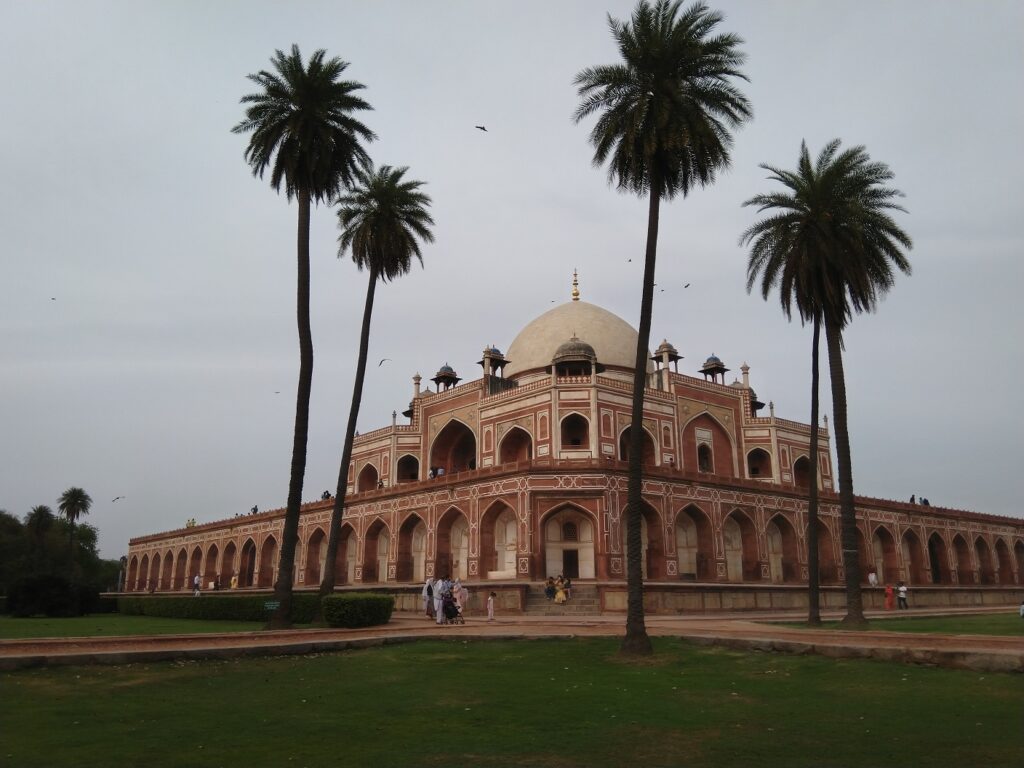
Humayun tomb a world heritage site
Seeing the tomb and its peaceful surrounding is a great pleasure for millions. The tomb is designated as world heritage monument by UNESCO in 1993. however it is a last resting place of many of Mughals, it is a relaxing and power generating place for many visitors. Therefore if we call it as Humayun tomb a living graveyard that would not be a false description of this great tomb.
This tomb had been the inspiration for many later building, tombs and mosques of Mughal time. One great example is the Taj Mahal built about 80 years later in Agra by the great grandson of Humayun. The garden tomb architecture of the Mughals reached its zenith after the Taj Mahal which is similar in many attractive features of Humayun Tomb.

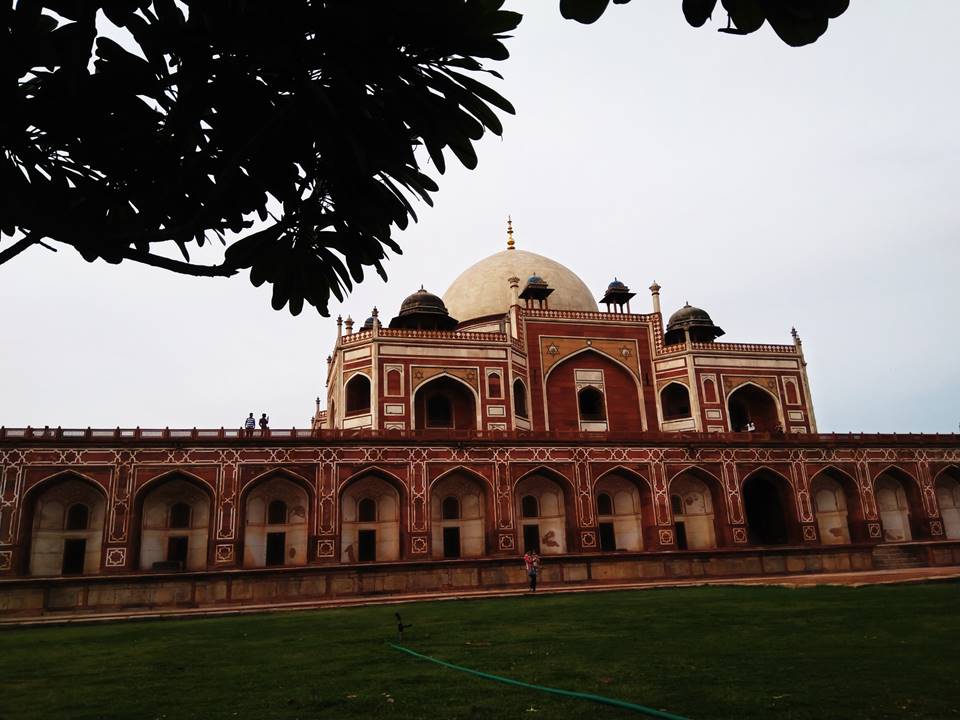
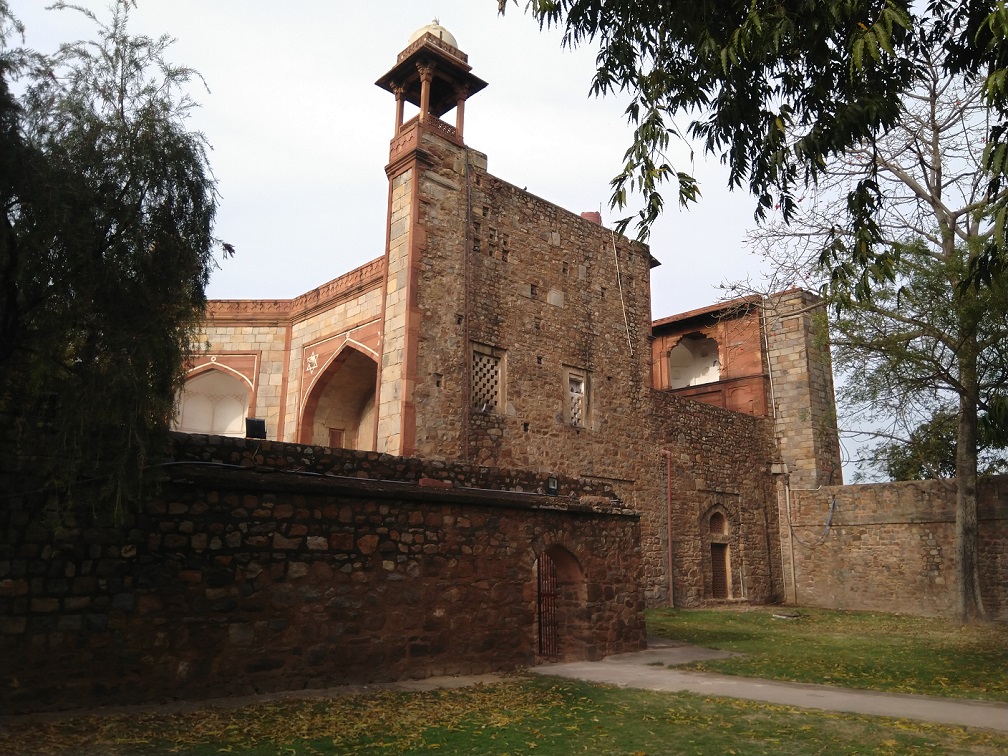
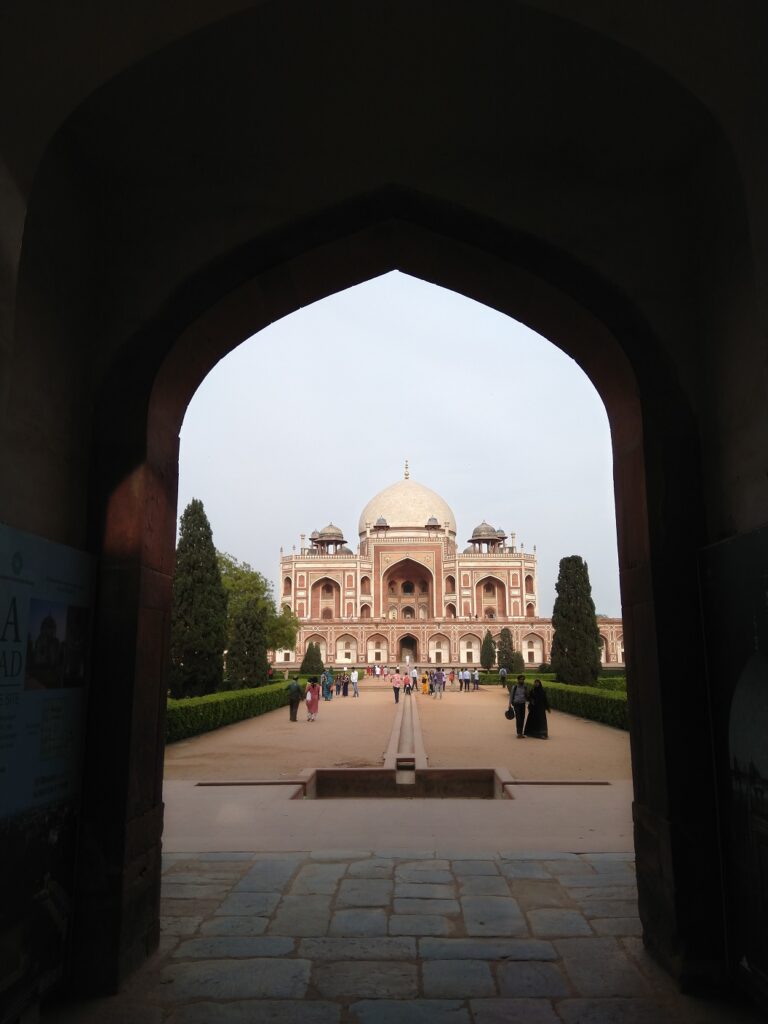
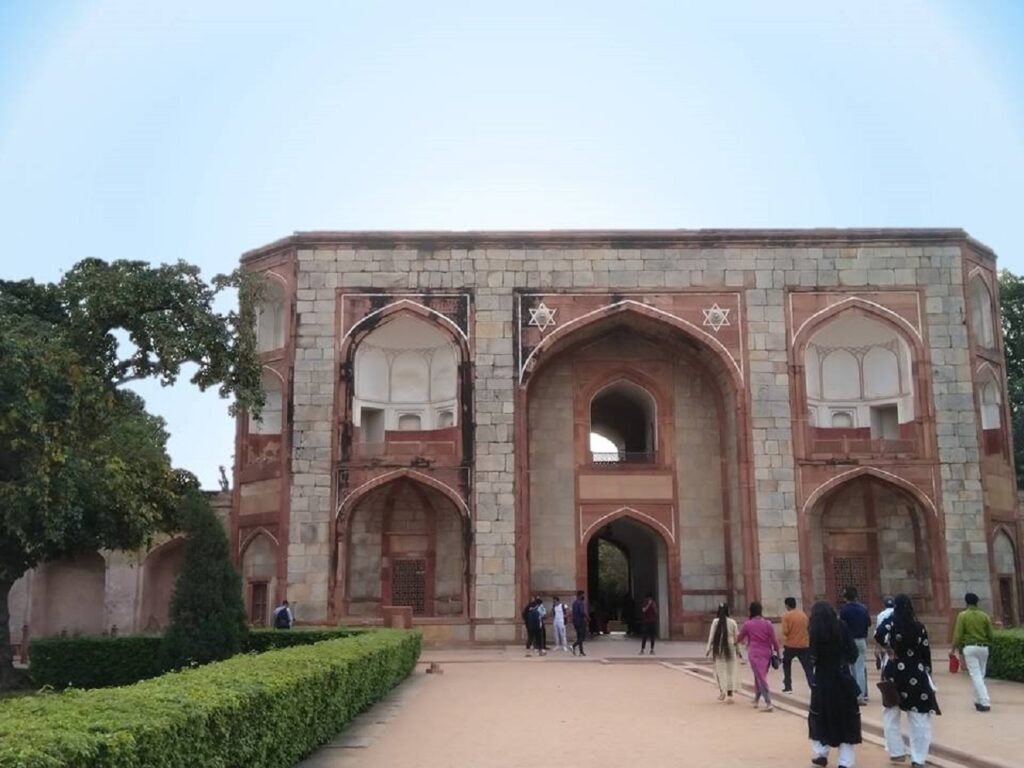
Humayu tomb in delhi is one of the best attraction to explore. Humayun’s Tomb was also designed by a Persian architect and his name was Mirak Mirza Ghiyath. Thanks for sharing nice information. Subscribed your blog for more updates.
Thank you very much for your nice feedback.
Really an amazing information about great Mughal emperor Humayun’s tomb.
Thanks for valuable information.
Thank you very much for your kind consideration.